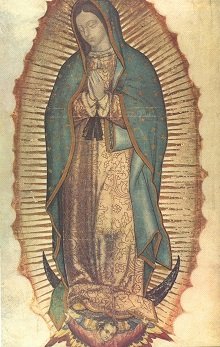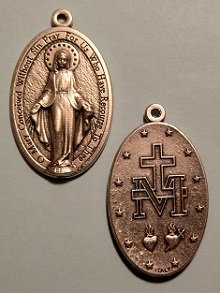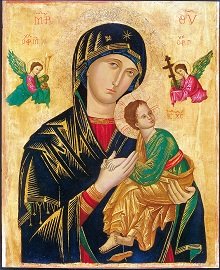What Day is Easter?
When Is Easter
Sunday?

How do we figure what day is Easter?
In the west, Easter is celebrated on the Sunday after (not on) the first full moon date after (not on) the vernal (spring) equinox date in the northern hemisphere.
In any given year, Easter occurs on one of 35 days between and including March 22 through April 25th - according to the Gregorian Calendar generally observed in the western hemisphere.
Simple enough? Actually, it's a bit more complex, as I explain below.
| The Date of Easter |
| in the Western Tradition (Gregorian Calendar) |
|
2020 - Sunday, April 12 2021 - Sunday, April 4 2022 - Sunday, April 17 2023 - Sunday, April 9 2024 - Sunday, March 31 2025 - Sunday, April 20 2026 - Sunday, April 5 2027 - Sunday, March 28 2028 - Sunday, April 16 2029 - Sunday, April 1 2030 - Sunday, April 21 2031 - Sunday, April 13 2032 - Sunday, March 28 2033 - Sunday, April 17 2034 - Sunday, April 9 2035 - Sunday, March 25 2036 - Sunday, April 13 2037 - Sunday, April 5 2038 - Sunday, April 25 2039 - Sunday, April 10 2040 - Sunday, April 1 2041 - Sunday, April 21 2042 - Sunday, April 6 2043 - Sunday, March 29 2044 - Sunday, April 17 2045 - Sunday, April 9 2046 - Sunday, March 25 2047 - Sunday, April 14 2026 - Sunday, April 5 2049 - Sunday, April 18 2050 - Sunday, April 10 |
Figuring the Date of Easter can be a Rather Complex Calculation
The calculation of the date of Easter is based on a set of rules, which are based on precise scientific calculations of astronomy, mathematics, and science.
One must also figure in the date line, time zones, different seasons in the northern and southern hemispheres, different calendars used in the western and eastern traditions (Gregorian and Julian), etc.
For the sake of simplicity, the rest of this page is based on the western tradition and the Gregorian calendar, especially as I am more familiar with it.
Some Details Figuring out the Day is Easter
When figuring out the date of Easter Sunday, there's a few things that have to be kept in mind.
The spring equinox is not necessarily the same date each year, the time of the full moon is different each year, and this makes 35 possible dates of Easter - anywhere between March 22nd at the earliest and April 25th at the latest.
Over a long period of time, March 22 is the rarest date of Easter, April 25th is the second rarest.
Another consideration. We're talking about the spring equinox in the northern hemisphere, because when spring begins in the northern hemisphere, autumn is beginning in the southern hemisphere.
And what about time zones and date lines, when the precise time of the full moon can land on two different dates at the exact same time?
Well, that's why they're called rules, because someone in authority has to make the call. For example, the time is calculated by the time and date in Rome, Italy, at the time of the occurrence of the full moon in relation to the spring equinox.
Passover and Easter Use the Lunar Calendar
The first Jewish feast of Passover - about 1,500 years before Christ - was begun by God when He gave many special orders to His people through Moses, to deliver the His people from years of slavery under the tyranny of Egypt, and further orders to observe this feast for all ages to come.
It was also to prefigure what God's Son would do for us, delivering us from the slavery to the devil and sin, on the exact day hundreds of years later.
Even though the Jewish officials determined not to crucify Jesus on the feast, they were forced to do so by the hand of God, who wanted this as a sign for all time that His Son truly is the Messiah.
The Passover feast and the Jewish calendar were based on the lunar months. The lunar months predate the calendar months, and therein lies the difficulty to reconcile them together.
Jesus died on the Passover, at the time of the full moon. That is why the darkness over the whole land for 3 hours at his crucifixion was miraculous, because a solar eclipse cannot occur at the full moon, but only a lunar eclipse is possible. (A solar eclipse is possible only during the "new moon", and covers only a relatively small portion of the earth. The historians in many parts of the world recorded the unusual darkness.)
When the sun was darkened in the middle of the day of Good Friday, the moon would have been on the opposite side of the earth.
Why is the Date of Easter so Important?
Finding the exact date of Easter is important, because so many other movable dates before and after Easter are determined by this date for the entire year. Here are some examples:
Before Easter:
- Ash Wednesday - 6 and 1/2 weeks before
- Palm Sunday - a week before
- Good Friday - 2 days before
- Ascension Thursday - 40 days after Easter
- Pentecost Sunday (Whitsunday) - 7 weeks after Easter.
What I Would Like to See on Religious Calendars
Many religious denominations do not put the moon cycles in their calendars.
I would like to see the cycles of the moon, put on calendars if possible, because so much of the liturgical year is based on the phases of the moon.
Many times I have to also consult a secular calendar to find when the full moon is.
In Genesis Chapter 1, we read that on the fourth day of creation, God devoted the whole day to setting the sun, moon and stars in the sky,
- to separate the day from the night,
- to mark off the seasons, days, and years,
- and to shine down on the earth
Could the Date Calculation of Celebrating Easter Ever Change?
Here on earth, possibly. If so, it would be most likely done by the hand of God. And most likely, at the end of the world.
God announced at the beginning of the world, "While the earth remains, seedtime and harvest, cold and heat, summer and winter, day and night, shall not cease.” (Genesis 8:22)
God also "changes times and seasons; he removes kings and sets up kings; he gives wisdom to the wise and knowledge to those who have understanding; " (Daniel 2:22)
In Heaven, there are no clocks, no need for sun or moon.
The Resurrection is an eternal event, which happened in our time.
God rules over seasons, sun, moon, and stars. God can cause major poles shifts and major earth changes.
In the past, God delivered the Israelite nation who obeyed his Passover commands by miraculous signs of plagues, darkness, and death to many Egyptians, and led them miraculously through the Red Sea to safety.
His Son Jesus died on the cross to free us from a worse bondage to the devil and sin.
So God can yet again deliver his faithful people from the hands of the devils and wicked people.
So that his people will be able to stand and look up (Luke 21:28) and rejoice at the fall of Babylon (which is a symbol of a powerful but wicked society and government) and their safe deliverance. (Matthew 24, Luke 21, Revelation 18).
In Luke 21:25-26, and especially in Matthew 24:29, Jesus foretells changes in the sun, moon, stars, and the heavens.
After all, God is in control.
Thank your stars He is.
Go to Easter Poems and Traditions.
Go to Home Page.
© Copyright 2010 - 2026 Thank-Your-Stars.com








